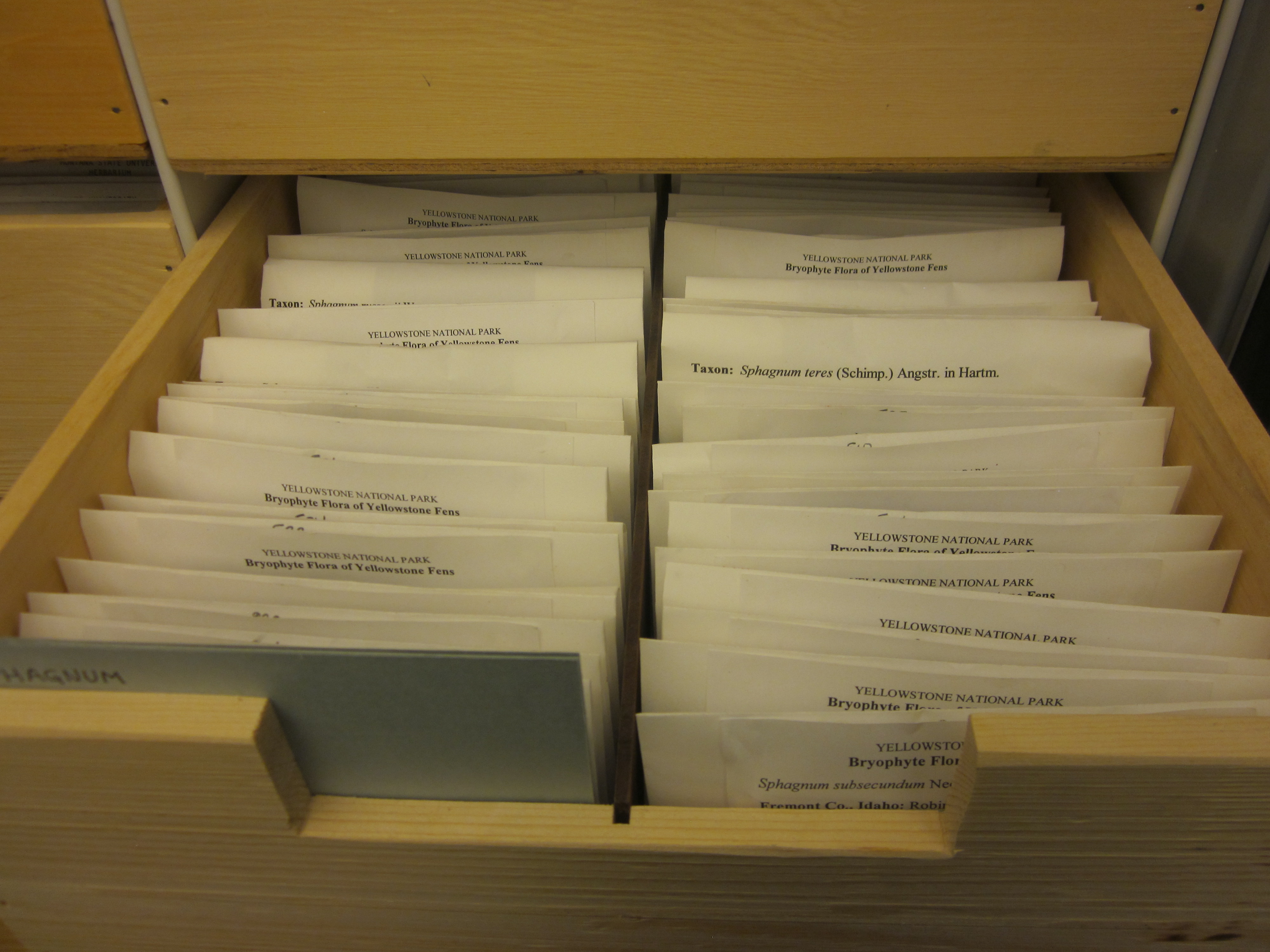An often underappreciated plant, the mosses of Yellowstone National Park are actually pretty darn cool. Maybe it’s that quality that makes them able to stand the high soil temperatures generated by thermal features in the geyser basins. Not to mention they can also withstand the degrees added to the thermometer by solar heat (the sun’s rays).
The geyser basins provide a harsh environment for vascular plants to grow in. There is little soil (much of it is sinter or travertine) and high temperatures. Mosses tend to do well in areas where there is no competition from vascular plants. That means that geyser basins are a perfect place for these rootless plants to make their homes.
The high light intensity means that many of our mosses have had to adapt. One way they do that is to have clear-tipped leafs that help deflect the light before reaching the interior cells. Many of them curl their leaves or wrap them around the stem when they are dry helping to protect at least part of the leaf from light. Some of them produce pigments that filter the light and reduce its energy, protecting the chlorophyll and DNA.
If you see a moss in Yellowstone, it probably means that the ground is hot. They don’t have roots so it’s easier for them to “stay in the kitchen” and they’ve adapted to withstand the high intensity light experienced in the basins. Plus, there’s the bonus of no competition from those pesky vascular plants.
One species of moss that grow on the terraces has a way to get rid of excess calcium. They have a bicarbonate utilization process where the moss uses the amount of calcium that it needs and deposits the excess on the exterior of the moss. The moss continues to grow as the deposit hardens forming a strong shell-like case around it. The growth rate of the moss is sufficient to stay ahead of the calcium deposition and as the deposit hardens, it forms a rock. When this process occurs over years the moss forms a rock called travertine. Thus the moss serves as the “skeleton” of the formation while continuing to grow and deposit more calcium. How cool is that?
Envelopes of mosses in the Herbarium collection
Example of a moss in the collection
Other blog posts in this series:
Housing the Plants of Yellowstone
Charismatic Carnivores of Yellowstone
What's THAT plant?


